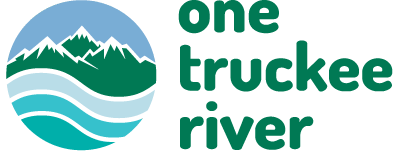Plant a Bird Buffet - Providing Food for Birds Year-Round
Frosty nights are making themselves scarce, the sweet smell of fruit tree blossoms are wafting in the air, and the brisk afternoon winds are beginning to blow off the Sierras.
Spring has sprung in the Truckee Meadows!
And since spring wouldn’t be complete without the cheerful chirping of songbirds, what better way to celebrate spring than by taking a moment to talk about providing for our feathered friends in our River-Friendly Landscapes.
Creating wildlife habitat is one of the Six Principles of River-Friendly Landscaping because it helps protect the biodiversity and beauty of the Truckee River Watershed. There are lots of opportunities for creating habitat for our feathered friends in our yards.
One of the key things we can do is provide year-round food sources. Here are three tips for creating a “bird buffet” that will keep the birds coming back to your yard for more.
Native Plants are Best
Native plants are the best choice (but not the only choice) for providing food for birds. This is because native plants provide food for caterpillars, which then provide food for baby birds.
Caterpillars are picky eaters and many of them only eat certain native plants. This is because they have co-evolved and developed symbiotic relationships with these plants over millions of years. They can’t just drop native plants like the next fad diet. They really need them.
And baby birds really need caterpillars. They are one of their major food sources. Young birds need a high protein, insect-based diet to support their fast growth rates.
A recent study from University of Delaware and Smithsonian Migratory Bird Center (SMBC) found that it takes more than 5,000 caterpillars to raise a clutch of Carolina chickadees. Photo Credit: Doug Tallamy
Fruits for Our Feathered Friends
When it comes to adult birds, providing lots of fruits can really round out the buffet selection. They are one of the best food sources, especially in winter when other foods may be scarce. And there are many fruit-producing plants that you can use in your River-Friendly Landscape.
Here are a few to consider: wild rose, thimbleberry, snowberry, currants, chokecherry, Oregon grape, redosier dogwood, serviceberry, sumac, and buffaloberry.
Wild rose (Rosa woodsii) in flower during the summer months (left) and in fruit, typically referred to as a hip, during the winter months (right). Photo Credit: Carrie Jensen
Seeds Sustain
Seeds are another mainstay in many birds’ diets. They are high in fats that are calorie dense and provide sustained energy.
Sunflower seeds are an excellent food source for many birds. Photo Credit: Pixabay
And the great news is that many perennials that provide seeds have beautiful flowers to decorate our yards before they set seed. There are also many ornamental grasses that provide seeds for birds and seasonal interest in our yards when flowers aren’t in bloom.
Here are a few flowering perennials to consider: asters, black-eyed susans, blanketflower, mule’s ears, common sunflower, and yarrow.
Here are a few ornamental grasses to consider: Idaho fescue, blue grama, Indian ricegrass, Great Basin wildrye, purple three-awn, and alkali sacaton.
Many perennials like yarrow (left) and black-eyed susans (right) provide colorful flowers in summer and seeds in fall that provide food for birds. Photo Credit: Carrie Jensen
So what are you waiting for? Get out and enjoy the nice spring weather and plant a few of these bird-friendly and river-friendly plants.
If you need more options, the Lahontan Audubon Society has additional suggestions: https://www.nevadaaudubon.org/plants-for-birds.html
Support for this post is provided by One Truckee River and the Western Regional Water Commission.
References
Narango, D. L., D. W. Tallamy and P. P. Marra. 2018. Nonnative plants reduce population growth of an insectivorous bird. PNAS. www.pnas.org/cgi/doi/10.1073/pnas.1809259115





